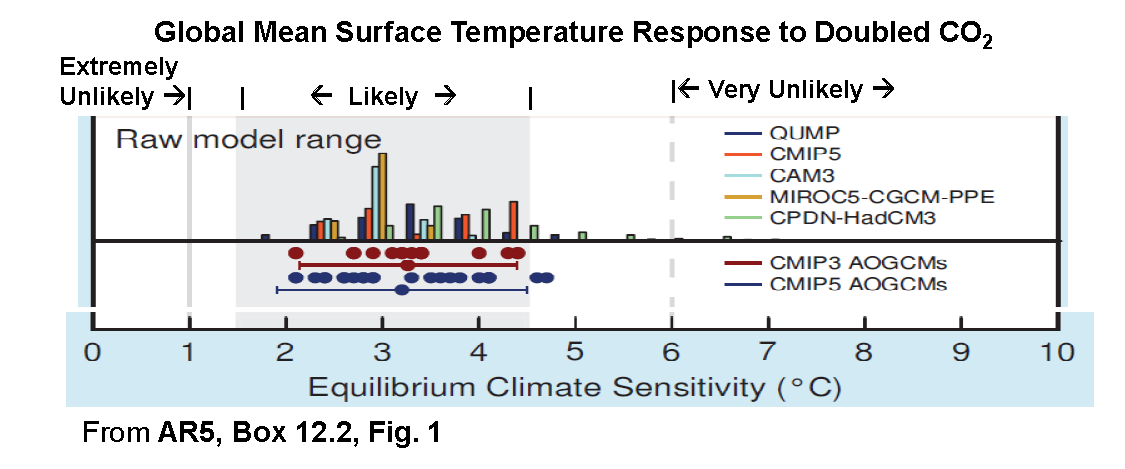A Skeptic's Guide to Global Warming
How sensitive is climate to Greenhouse Gases?
Once we know that increasing greenhouse gas (GHG) concentration will warm the Earth, the question becomes: how much? A .1oC warming would be barely noticible, but 10oC would be catastrophic.
When GHG is injected into the atmosphere, a number of feedbacks amplify or reduce the original climate effect. For instance, ice is very reflective, so if we warm the world and there is less ice cover, the Earth will absorb more sunlight and warm further. Similarly, warmer air can hold more water vapor (another GHG), which causes further warming.
Doubling CO2 causes a warming of 1.2oC if there are no feedbacks. The difficult part is estimating the feedbacks. We use climate models to explore the net effect of all positive and negative feedbacks. Models show a wide range of warming (see figure), indicating a likely warming of 1.5-4.5oC after doubling CO2, but we are not sure where in that range the real world would be.

Scientists have also estimated the climate sensitivity by looking at the observed response of the climate to forcing, and by estimating ancient temperature and forcing. These estimates of climate sensitivity have a wide range of values similar to the model values shown in the figure.
The ability of models to reproduce 20th century warming is a sign that the models are not wildly inaccurate. However, they do not allow us to be any more definitive, due to a number of factors. For instance, human-made aerosol emissions, which counteract the greenhouse effect, are not known very accurately for the 20th century, so we are not sure if the external forcing of the models is correct.
What makes the climate change?Return to front page.
References
AR5: Working Group I Contribution to the Fifth Assessment Report of the Intergovernmental Panel on Climate Change, 2013, Stocker, T. F., D. Qin (eds.).
Last modified: 21 July 2018